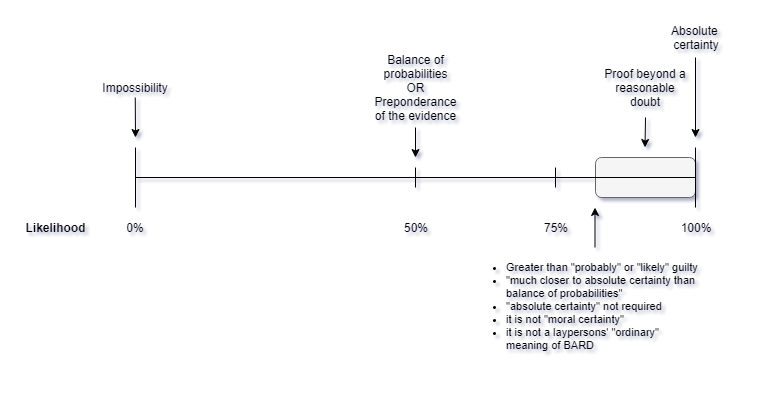Law 30: Case Study Comparisons 2019
You’ve been reviewing two criminal cases related to offenders in Alberta and Saskatchewan. It’s one thing to study and understand a single criminal trial and outcome, but to make comparisons to another requires more complex thinking and analysis of the facts.
You’ll have another whole class to review both cases and what information you have related to each. Tomorrow, you’ll have an open-book exam testing your understanding of the cases themselves but also your legal understanding of elements of Criminal Law.
Below are a list of factors to consider in your review of both cases:
- the defendant’s personal backgrounds
- their support system – family, friends, secure social environment
- health and wellness of the defendant at the time of the crime – anything to impair decision-making?
- others involved in the crime – a principal offender, others aiding/abetting putting pressure on defendant
- elements of the criminal act(s):
- voluntary actions taken by the defendant that are considered a criminal offence
- any inaction of the defendant that constitutes failure of duty
- types of criminal offences they were charged with and/or actually convicted of
- proof of their actus reus (guilty act) and mens rea (guilty mind) for each offence
- remember, prosecution needs to prove guilty act and guilty mind occurring together for each offence
- difference between the sentence of a conviction via the Youth Criminal Justice Act versus the adult sentence of the Criminal Code
- what evidence or elements of the crime would/could a prosecutor focus on to prove and support the defendant’s level guilt in the crime?
- What evidence or elements of the crime would/could a defence lawyer focus on to prove and support their client’s innocence in the crime?
- What similarities can you identify of their offences and trial outcomes?
- What differences can you identify of their offences and trial outcomes?
- Consider why Paul’s offences seemed similar in circumstance to Briscoe’s but her charges were reduced to manslaughter and unlawful confinement.
- Consider the phsyical involvement of both Briscoe and Paul in their offences.
Good luck!
- Sentencing youth for murder – comparison of sentence limitations as youth vs adult
- Comparison of unlawful confinement vs kidnapping (CriminalNotebook.ca)
